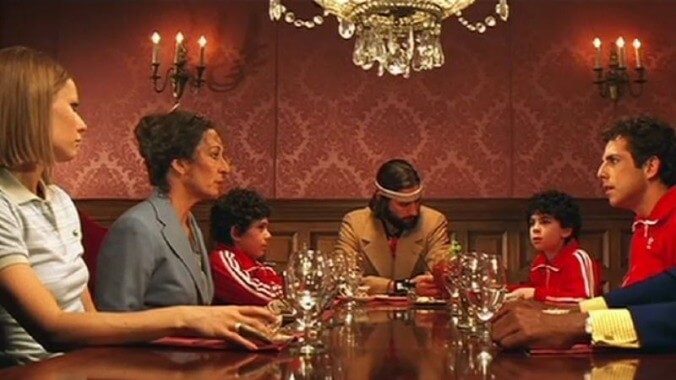New York: The Royal Tenenbaums house
The Royal Tenenbaums is set in New York, but not really. The city viewers see in the film certainly looks like New York, but the names have been changed and, in at least one case, an iconic landmark covered up. Consequently, the house that Royal Tenenbaum (Gene Hackman) bought in the winter of his 35th year is located on Archer Avenue in the film, not in Harlem on Convent Avenue at 144th Street, as it is in real life.
Like its cinematic counterpart, the house at 339 Convent Avenue is a private residence—but it’s a big place, so it’s also home to the Lana Woods Gallery, which specializes in “African-American masterworks.” The gallery’s schedule unfortunately precluded us from getting interior footage, but guest Will Sweeney told us that the inside is much the same as it looks in The Royal Tenenbaums. With the exception of Anjelica Huston’s study, all of the interiors were shot in the house—as well as the exteriors. Luke Wilson’s rooftop birdcage was on the roof, Owen Wilson’s apartment is across the street, and the embassy is next door. Of the 60 or so shooting days, 30 were spent at the house.
“We shot the movie from February to May here, intermittently,” Sweeney says. “Because the film takes place over a long period of time, Wes wanted a lot of weather. So we were able to get winter weather, spring weather, fall, summer weather, get a whole range of things in that period of time. It wasn’t like we were here everyday; it was more like a week on, a week off here and there.”
The actual location of the house proved ideal, too. 144th Street is short and quiet, so closing it off to traffic wasn’t disruptive. The City College, located 10 blocks to the south, provided space for trailers and storage. Local churches provided holding areas for cast and crew. “We were here for a long time, and we were really lucky that the community really supported it,” Sweeney says.
Which is good, because just getting to that point was an ordeal. The house had been in foreclosure until the current owners purchased it, but tracking them down was so problematic that Anderson finally just left a note on the front door—which surprisingly worked. The new owners hadn’t moved in yet, and the house needed major repairs, so the director really had a blank canvas. The house being empty also helped the production make some structural improvements so the building could sustain the strenuous filming process. (They even built a low-tech elevator behind the house to lug the gear to the upper floors.)
No one had anticipated the roof of the house being so ideal for shooting, so finding it was another stroke of luck. But Anderson had less luck with the bird he kept up there.
“Wes was very set on having a falcon,” Sweeney says. “We went through almost as long of a journey trying to get the falcons as the house. We went through a lot of animal wranglers, and everyone who was a professional told us, ‘You can’t do a falcon. They come to New York City, they see a pigeon, you’ll never see the falcon again. You can’t rely on falcons; what you should do is use a hawk.’ But Wes was determined to use a falcon. So we find a guy in Florida who was a falcon trainer, and he brings the falcon. We bring him up to start shooting. Literally the first shot we start shooting the falcon, he sees a pigeon—the falcon is never to be seen again. Then we had to re-shoot the scene with a hawk.”
Sweeney adds they at least got some footage of the falcon flying away. Considering just about everything else went right for Wes Anderson with this house and The Royal Tenenbaums—which remains his highest-grossing film—one lost falcon isn’t bad at all.
